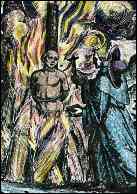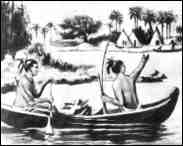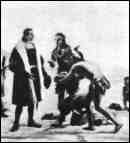
Early History of Cuba
An Introduction

According to historian Louis A. Pérez, Jr., Ciboney Indians migrated to the central-western region of Cuba as early as 1000 B.C. By 1000 A.D. they had settled the eastern third of Cuba.
Over the next 400 years, between 1050 and 1450, Arawak Indians (Ciboneyes and Taínos) migrated into and across the island, displacing the Ciboney from all parts of Cuba except the "western extremities."
By the time Cristóbal Colón made his way to the island, Ciboney and Taíno tribes lived practically in peace, with no major enemies to contend with.
In 1508 Sebastián de Ocampo circumnavigated Cuba, proving that she was an island, and not a peninsula, as Colón had originally speculated.

Diego Velázquez, one of the richest Spaniards in the new world, assumed the role of conqueror of Cuba. He established the first permanent settlement on the island in Baracoa, from which he launched the Spanish conquest of Cuba, which took less than four years to complete (1511-15).
Once the conquest was completed, Velázquez began the practice of issuing encomiendas, in which a Spaniard was issued a native family (or families). The Spanish "encomenderos," according to historian Jaime Suchlicki's book Cuba, From Columbus to Castro, "would extract labor and tribute from them while providing for their Christianization."
An "encomienda" did not include ownership of the land, and the "Indians" were not considered slaves, but "free" subjects of the empire. The "encomenderos," however, treated their "Indians" as slaves, and those who had survived Velazquez' "conquest" began to die from forced labor, disease and suicide.
Velazquez served as governor of Cuba, with almost unlimited power, until his death in 1524. In 1538, the official capital of the island was transferred to Havana, and the island stayed under Spanish empire control for almost 500 years.
Related
The first Cubans | Cristóbal Colón - A brief bio | Hatuey - Cuba's first guerilla warrior | Father Bartolomé De Las Casas
Notes on Father Felix Varela
